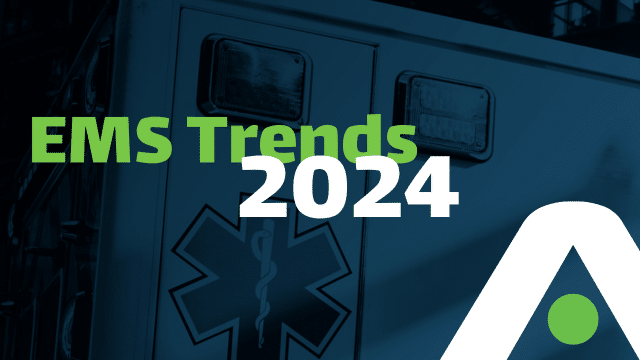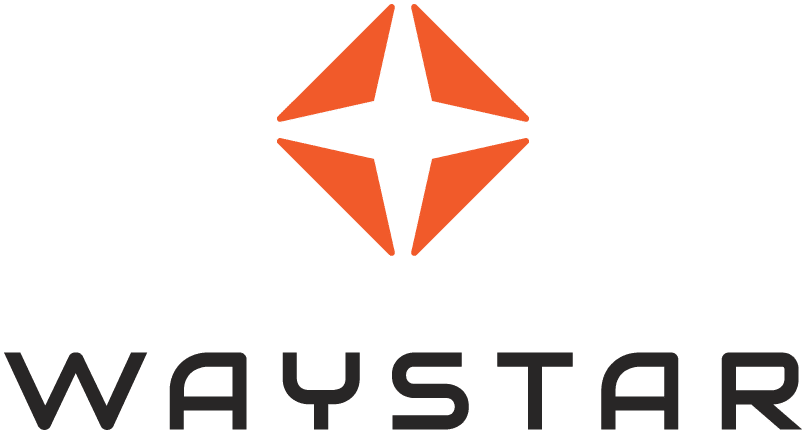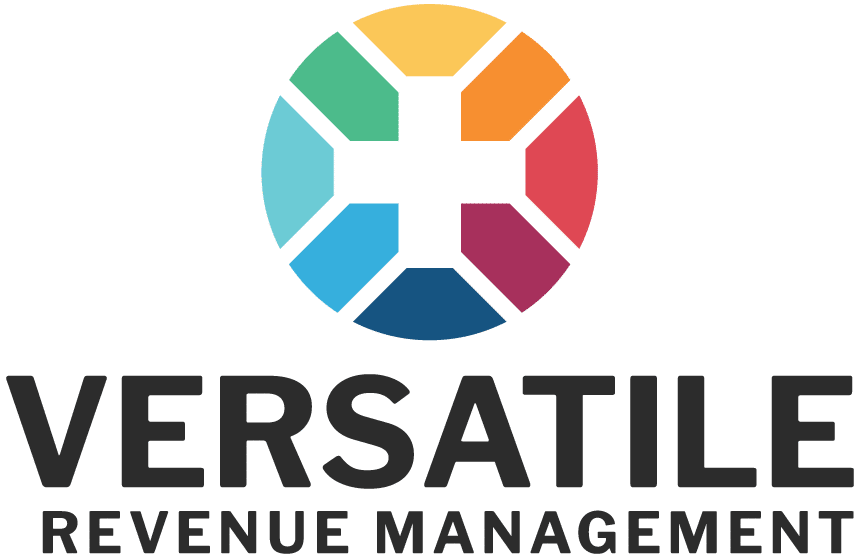2024 EMS Trends from 14 Industry Leaders

Should You Hire an EMS Billing Service or Build Your Own Billing Team?

EMS Billing can be complex and time-consuming. It requires proper documentation, accurate coding, and timely billing to maximize revenue.
However, many EMS organizations lack the expertise and efficiency to maximize revenue in billing. As a result, they experience ballooning accounts receivable and aging balances, which are the biggest challenges that EMS organizations face. Worse, most organizations don’t even know why their accounts receivable are growing.
Even when an EMS organization can unlock additional profits by increasing utilization rate, billing can be a bottleneck that prevents them from realizing the associated cashflow. It is, therefore, absolutely essential that you take EMS billing seriously.
When faced with billing challenges, the logical solution for most business owners is to hire internally. But is that really the best business decision? This article will help you determine that.
If Hiring and Retaining Talent is a Challenge, Then It’s Better to Hire an EMS Billing Service
Even in 2023, the EMS industry continues to face a nationwide labor shortage. In many cases, even if hiring a quality employee can be accomplished, retaining that employee is still challenging. EMS organizations struggle to afford billing talent primarily because EMS organizations’ reimbursement is throttled by legislation, insurance, and other factors.
Say, for instance, you successfully hire an employee to handle billing. Just when billing operations are ramping up nicely, that employee may leave the job, which will completely disrupt your billing momentum. Not only will the constant hiring and onboarding drain resources, but it can also be emotionally taxing for both you and your organization.
Therefore, if you’re concerned about your ability to hire and retain talent, then it may be better to hire an EMS Billing Service instead.
For Small Organizations, EMS Billing Service can be Your Entire Billing Department
Smaller EMS organizations may not need a full-time EMS billing employee. In this case, rather than hiring a full-time employee who is not fully utilized, you can hire an EMS Billing Service to work when needed and pay them by project or by the hour. Plus, you get additional leadership, experience and expertise only available from experienced billing employees.
For Larger Organizations, EMS Billing Service can Fill in Labor Gaps
Larger EMS organizations with a sizeable billing department can also utilize EMS Billing Services to back-fill labor gaps. This includes unexpected maternity leave or a sudden influx of billing tasks or issues. EMS Billing Services can also plug whenever expertise gaps arise. For instance, they can handle tedious billing tasks while your team focuses on collecting receivables. Or they can help you collect receivables when your team is focused on financial reporting.
In-house Billing vs. EMS Billing Service: Top 5 Considerations
Not all EMS Billing Services are created equal, and not all employees are perfect for the job. When making the decision on whether to hire full-time employees or hire an EMS Billing Service, you need to consider the following factors:
1. Cost Effectiveness
While it may seem like an additional expense to engage an external service, a comprehensive cost analysis is necessary to evaluate the financial implications when it comes to hiring in-house or engaging an external service.
- Staffing Cost: How much does it cost to hire an employee versus hiring an EMS Billing Service? Hiring, onboarding, and training require time and resources, and that expense could be significant especially when you fail to retain that employee. Further, if the employee is not fully utilized (when there’s not enough work), you’ll incur wasteful spending.
- Training Cost: Will you need to train your potential employee or external service? If you can’t afford the proper expertise, then you’ll incur additional training costs so the employee is proficient in coding, documentation requirements, and compliance regulations.
- Revenue Loss: Does the prospective employee have the necessary expertise to complete the job with minimal errors? A lack of expertise and experience will lead to revenue loss from billing errors and delays. Many EMS organizations face this issue today, which is yet another cause of ballooning accounts receivables.
By comparing the costs associated with in-house billing operations to the fees charged by EMS Billing Services, you can determine whether hiring an external service is the most cost-effective option.
2. Specialization and Expertise
EMS billing is subject to stringent regulations and compliance requirements. That means the employee, or the EMS Billing Service needs specialized knowledge in documentation and compliance set forth by Medicare, Medicaid, and insurance companies. Compliance with these regulations is crucial to avoid penalties and legal complications.
- Coding Proficiency: Is the potential employee a Certified Ambulance Coder (CAC)? Are the staff members of the external service certified? Are they efficient and proficient in complying with documentation regulations – a necessary requirement for EMS organizations to get paid?
- Documentation Experience: Compare documentation skillsets. Patient care reports have narratives, and the billers should be well-versed in matching the narrative with the necessary code to be compliant, reduce errors, and get paid on time.
- Track Record: What does their work experience reveal? Request references from past clients or past employers to gauge their success in ensuring compliance and dealing with regulatory challenges. References can provide valuable insights into their expertise and reliability.
It is essential to hire an employee or an external service that possesses the necessary expertise to do the job. Doing so will reduce the risk of compliance issues to avoid significant financial and legal consequences.
3. Streamlined Billing Process and Efficiency
A streamlined billing process increases operational efficiency and maximizes profit. That means the additional labor added to your team should streamline, not hinder, your billing process.
- Technology Proficiency: Is the prospective employee proficient with your billing software platform? If not, you will need to incur extra costs in training.
- Software Integration: Is your billing software integrated with other modules, such as CAD and ePCR, to streamline the billing process? A streamlined billing process ensures faster processing and payment. It also increases the work efficiency of your potential employee or EMS Billing Service.
- Clearinghouse Integration: Can the new employee work with your existing clearinghouse? Employees who have not worked with your clearinghouse will require ramp-up time to work efficiently. Any EMS Billing Service that doesn’t work with your clearinghouse will likely request that you switch clearinghouses. In both scenarios, your current billing process will be disrupted, bringing additional uncertainty and unnecessary risks.
If you have well-defined procedures and software systems for claim submission, follow-up, and appeals, then the right billing expert should fit nicely into your billing process without disruption. This allows your organization to operate efficiently, reducing the time between claim submission and payment receipt.
4. Billing Transparency & Revenue Maximization
Transparency avoids information misrepresentation and the uninformed decisions that follow. Not only do you need billing visibility, but you should also have visibility into the biller’s performance.
- Reporting capabilities: Is the employee or external service capable of reporting on key metrics? Real-time access to billing and financial data is essential for making informed decisions to maximize revenue. Ensure the prospective employee is capable of providing detailed and customized reports on key performance indicators with financial insights.
- Performance metrics: Are you able to monitor the biller’s performance metrics? Look for indicators such as claim rates, first-pass claim acceptance rates, and average days in accounts receivable. These metrics provide insights into their ability to deliver efficient and effective billing services.
- Revenue Maximization: Is the new employee insightful and capable of making suggestions to maximize revenue? Being able to generate reports and performance metrics is one thing but decoding what the reports mean and how to improve is the important next step. Assess whether the potential employee or external service has experience in maximizing billing reimbursements.
To assess the above factors, ask what kinds of reports can be generated and what insights can be gained from them. For performance, ask what can be expected from their work using measurable metrics.
5. Onboarding and Termination
Hiring a full-time employee or an EMS Billing Service has different risks and costs associated with them. What if the employee wasn’t what you expected? What if the EMS Billing Service couldn’t perform their job? What are the costs of onboarding and termination?
- Onboarding Process: How long will it take for the prospective employee to operate at max capacity? This touches on previously discussed topics of training cost, coding proficiency, and technology proficiency. The ideal employee is one who can start working efficiently out of the gate.
- Termination Costs: What are the risks if you choose to terminate your new employee? For employees, it’s mostly the sunk cost of hiring, training, and onboarding. For EMS Billing Services, there may be a termination fee depending on the service provider.
To lower risks, most employers deploy a contract-to-hire model for full-time employees (although this model attracts less talent). If hiring an EMS Billing Service is the better business decision, then it is better to work with a service that doesn’t require termination fees.
Conclusion
If you’re a small EMS organization, deciding on whether to hire a full-time employee or an EMS Billing Service can be a big decision. Evaluate the cost-effectiveness, expertise, efficiency, technology, transparency, and the onboarding and termination process. For larger organizations, hiring a full-time employee or external service to fill in the gaps is more straightforward – you’ll only need to consider whether the added manpower can efficiently fit into your existing billing operations. After your analysis, the decision on whether to hire a full-time employee or an EMS Billing Service will become clear.
If you need a diligent, transparent, and results-driven EMS Billing Service, Traumasoft recommends Versatile Revenue Management. Visit their website here: https://versatilerm.com/
Providing Advanced Life Support to the EMS Industry

EM Weekly Podcast Featuring RJ Morrison from Traumasoft
How do we fix the issues and challenges that the EMS industry faces? How can tech help?
In this podcast, Zack Borst from EM Weekly discusses EMS issues with RJ Morrison from Traumasoft. Started as an EMT-B and climbing the ranks to Paramedic, RJ’s seen it all, taught a thing or two about EMS, and has filled pretty much every agency role you can think of. Now, he’s diving into the world of Traumasoft, convinced by its power to transform the way agencies work and look after their dedicated teams.
Below is the original podcast video and the transcript.
Topics Discussed:
- Traumasoft’s story [00:05:58]
- Technologies to solve EMS issues [00:11:04]
- Improving mental health of field workers [00:15:55]
- Attending to employees and alleviating burnout [00:20:48]
- Advices for EMS managers [00:27:27]
Introduction
Hey everybody. Before we start today’s podcast, I want to ask my listeners and viewers if you can help us out. Vermont has been impacted by a very significant flood that has created the same levels of destruction that we saw in Irene over a decade ago. There are a lot of people suffering a lot of just impacts to, you know, livelihoods and it’s going to be a very long recovery. Thankfully, Vermont has done a fantastic job learning a lot from Irene and so I think we mitigated a lot more impacts than we probably would have. But we’re not actually out of this yet. We’ve had multiple nights of just heavy, heavy rainfall creating more issues around the state, including landslides and stuff. If you’re in Vermont and you need help, or if you want to help and you’re in Vermont or outside of Vermont – Vermont.gov/flood – that website has become sort of the one stop shop for information about how to take care of your own stuff if you’re a victim of the floods, as well as for folks who want to help. It has information on volunteering. It has information on donations. Remember, donate cash over stuff unless there’s very specific things that are asked for.
[00:01:35] – Zack Borst
Cash is just so much more flexible and valuable in a disaster and taking stuff in actually takes a lot of logistics and resources away from responding to the disaster. So again, major, major disaster. We’re still sort of in the process of assessing how bad it is and what the long-term impacts will be. But I think all of us know, as a Vermonter, my entire life, know, we can’t thank people enough for the help they’ve already provided and there’s still just so much help that’s needed. So that’s my pitch. I would really appreciate any help that you can provide. Share the resource Vermont.gov/flood so that other people can help. And yeah, hopefully maybe on the next episode we’ll have good news and sort of start to get out of this, but we’re in it right now, so I appreciate any help you can provide. Thank you.
And I think it’s an appropriate way to open up an emergency management podcast with the ongoing disaster. And you have a background that I’m sure you’ve seen all sorts of disasters and I’m really excited to have you on here. RJ is with Traumasoft and I’ll have him talk a little bit about that.
[00:03:16] – Zack Borst
But first and foremost, who are you? What’s your background? How did you get here?
[00:03:20] – RJ Morrison
Well, I appreciate being on Zach. RJ Morrison my background, I started in Boston, Massachusetts as an EMT, paramedic, wanted to change the world as they say, and then went into the management field midway through the career. About eight, almost ten years ago now I moved out to California to manage a couple of organizations out here.
[00:03:47] – Zack Borst
Oh, you guys would love our rain.
[00:03:48] – RJ Morrison
When you’re saying you’re suffering from rain, I’m like, can I just borrow some?
[00:03:54] – Zack Borst
Just a little.
[00:03:54] – RJ Morrison
Right now I believe we have fire in Riverside county. I think they’re at like 20% containment.
[00:04:03] – Zack Borst
I’ll take rain over fires, but yeah. So you moved to California about ten years ago.
[00:04:08] – RJ Morrison
Since I’ve settled in, this is now my new home. I never thought I would say it, but I mean, it’s 60 degrees out. It’s too cold for me. I need a jacket so I can’t go back to Boston or tell people I’m from New England.
[00:04:23] – Zack Borst
Yeah, we’ll chew you up and spit you out.
[00:04:28] – RJ Morrison
Crazy that way. So I’ve been out here up till the beginning of this year. I was managing organizations local to Los Angeles. That was in Southern California. But then I made a change, a career change, and went into the technology side, and I started working for Traumasoft, which I was introduced to the program because I was using it as an administrator for my staff and such. So it’s definitely a change in going full circle in a sense of doing this job a little bit.
[00:05:58] – Zack Borst
I think it’s good. So Traumasoft is a management system for EMS, but it does a whole bunch of things. And I think it’s really interesting that you went from a practitioner into this. I did the same thing, actually, with Everbridge. I was a emergency manager who used Everbridge, was super familiar with it, and then went over and worked for them for a few years. And the reason that I think it’s really smart for tech companies to do that is there’s a lot of software out there in public safety and emergency management that is designed for us but not by us. And when you have a system like that, that doesn’t actually take into account the people who are going to use it, it’s essentially functioning as though a designer or an engineer took a look at what they think we do and then they tried to replicate that. And I think that that is almost always a recipe for disaster, if not just making things far more complicated than they should be. So what got you to jump from actually being on the practitioner side into the technology side. That’s a big leap for a lot of folks, and certainly from someone who was a paramedic, a doer, and now you are on the other side trying to help out those folks.
[00:07:23] – RJ Morrison
You made a great point there when you talk about people that are designing the programs that aren’t from the industry. So Traumasoft, ironically, the founders owned an ambulance company and they were kind of sick and tired of using the, I won’t name drop in a sense, but the big brands that were out there, all my competitors now, right? Everybody wanted to do a little bit of this, a little bit of that, but then it turned into everybody had 15 different logins, they’re going to 15 different programs. Brian Barlow, along with Mike Coffman, who are the co-founders of Traumasoft, they started building this platform to eliminate all that stuff. Brian was a paramedic since like the early ninetiess or something like that. So being a practitioner, he’s built what it is today. And when I started using the platform, at first I was kind of like, I came from the big competitors and their fancy pretty colors and all that other stuff. But as I started to dive in more and more on the platform, I’m like, no, I really like this because it’s user friendly, right? I mean, if anybody that has done administration and has used certain programs and doing data analysis and stuff, you have to have like a PhD in crystal reporting in order to do any type of analytics.
[00:08:52] – RJ Morrison
Which I always tell people all the time because they’re like, oh, you work for an IT company. I’m like, no, I can spell IT. I don’t know how to do anything. I mean, don’t ask me how to do change a deck or something. I mean, I’m learning terms that I have no idea what they mean. But sure, some people that are like, yeah, I’m like, you have a five nine server. I’m like, sure, no idea what it means.
[00:09:11] – Zack Borst
Full stack development. Like the only full stack I care about is a full stack of pancakes. Everything else I don’t care.
[00:09:19] – RJ Morrison
So when I was looking at it, maybe I wouldn’t say a career change in a sense, but I was starting to wind down from being… I have young kids. So the Sunday to Saturday, 24 hours a day, being on call for every little thing, whether it’s a car accident or an employee getting injured. I was getting a little burnt out from it. So I was looking to make a change to something else. And I happen to know the VP, or I’m sorry, he’s the CRO of Traumasoft, and we were talking and as a customer, I’ve always been a vocal person on different things. And he’s like we’re looking for somebody to work in the west coast and specifically California, because California, when it comes to labor management out here, there are so many nuance of different laws that they say you can hire a lawyer and help you with stuff. No, you have to actually find a specifically trained lawyer out here to work. So Traumasoft, with a lot of the programs that we have, the different modules, there is a huge thing with we do what they call out here, we call it C seven compliance, which is lunch breaks and monitoring them when that happens and stuff like that.
[00:10:45] – RJ Morrison
So we’re the only platform that I’ve seen that has that ability to do those things. So a lot of things like that was just like an interest. And I’m like, sure, I’ll try it. But coming onboard, I was like, listen, I’m not a salesman here. I’m not good at this. He’s like, no, you don’t have to, you just have to talk about it.
[00:11:04] – Zack Borst
I’ve actually found the same sort of, obviously, in my day job, we’re a private sector emergency management company, so we still have to get contracts. We still have to go out and engage with folks. I’m actually a terrible salesman. I don’t want to say lying, not all salespeople lie, but certainly there is a tactic there where they embellish reality, and I’m just not good at that. I’m like the good old New England Vermonter, who is too kind and gets run over by everyone else. But because I know what I’m talking about and because I am passionate about my field, it actually is extremely valuable. And I imagine it’s probably very similar with you. When you’re in the trenches and you’re looking for stuff to make your job easier, you want to find the company that actually gives a crap about you. And a lot of them, I’m just saying this very generalized. Not every company is dirty, not every private sector venture that’s working in public safety is just out there to get money. But there are certainly many of them out there that just don’t seem to fully grasp what it’s like on the other side.
[00:12:15] – Zack Borst
And in EMS in particular, the field is struggling and continues to struggle. And honestly, that was one of the things that sort of led me to this conversation was I had a cold email from Victor, who’s working with you guys in marketing and stuff. And he was like, hey, I think based on your sort of discussions, you should chat with Traumasoft, because you’re talking about the things that we’re talking about. So staff burnout, innovating a field that is very difficult to innovate in, certainly the practical side of EMS, there’s all sorts of innovation and technology that’s being put into ambulances and stuff, but the culture, the structure, the attitude, those things take a lot of time to change. And so when you start introducing technologies. On top of that, it can make things really complicated. So maybe talk a little bit about how you sort of see Traumasoft fitting into that or maybe some ways that you all are innovating in that. Because I think our audience is emergency managers primarily, but we have a lot of public safety folks and EMS in many cases falls under the emergency manager’s purview. But it’s like that other thing.
[00:13:33] – Zack Borst
You have dispatch, you have emergency, your general EM stuff, and then you have EMS, and trying to manage all that is really complicated. So your software can make that better.
[00:13:42] – RJ Morrison
Yeah, that’s our goal. Right? I mean, our goal is to always make it better. The labor force that we’re working with, at my age, I don’t think I’m that old, but then I realize in the industry I’m an old dinosaur because I got 20 years in, right? I’m like, wow, I was thinking back to when I was in my early 20s, like looking at the guys that were in their forties and I’m like, wow, you guys have been in this, I can’t do that. And the next thing you know, here I am. So one thing is that with our program, when it comes to managing, we have modules that will do our scheduling and deployment resources and do analytics and stuff like that, which is all kind of part of the job, whatever. But what we’re doing, interestingly for the newer generation, basically, frankly, it’s the social media kings and queens nowadays basically coming in and I can turn on Instagram, but don’t ask me to do anything with it. But we’re building platforms that are apps, which are what they know how to use, and people that we’re using to build them are their age.
[00:14:54] – RJ Morrison
Actually, one of our project leads is building our application called Core, which is for the employees to use. It’s interactive, social media type of thing, where they can talk to each other, have little chat groups. Stay engaged with what’s going on, and we can put feeds into it to have different news and EMS world coming out, things like that, where they can interact with it. But it’s an app and the person that’s building it, he’s in his mid twenties. And this is what they do. They had to live in that world. EMS managers ask everyone of us, we’re the best ones that there, no matter where. I can do the job better than anybody else, just ask me. But this is something that we’re falling absolutely. I mean, anybody that says they don’t have that is lying. Right? I mean, I have to say yeah, but if you would have asked me to come up with that idea, I would be like, no, I couldn’t help you there. But we’re engaging.
[00:15:55] – Zack Borst
Well, yeah, I think this is the thing. So we chatted. It was like almost a month ago, I think. And one of the things that really flicked a light bulb in my head was a yes. The app is awesome, I think for a number of reasons. The days of being able to sit around a station and wait for a call are gone. It just doesn’t exist. Either the agency is too resource strapped or too busy to have time to sort of catch up with your fellow EMTs and paramedics and everything else. So just having that some way to sort of coordinate all that. And then the other thing that I think is really important is we are also facing a mental health crisis on top of everything else. So huge increases in suicides. I’ve known far too many people in public safety who have either committed suicide or gotten so close. Part of that has to do with that loss of connection. And you all are recognizing this and are leaning into it in ways that I had not heard of another company doing as part of a management platform as well. So it’s not just like this is its own thing, it’s like this is part of the apps.
[00:17:15] – Zack Borst
I was going to say the core of the company, but that’s also the app name. But it is the core of your organization that you recognize this and that you’re trying to improve it in whatever way that you can.
[00:17:30] – RJ Morrison
Absolutely. Mental health nowadays and we were talking earlier that my wife is a clinical psychologist, so mental health is a daily thing in my house, mainly for her. But speaking for our organization, one of the things we’re doing with our app is basically we’re trying to find a way to put in almost like a heat lamp, in a sense, on employees, to have them answer a couple of questions or kind of look at the pain scale type of thing and select what their mood is to kind of be able to do a temperature check of seeing how people are doing. I happen to be on the board of directors for the Code Green campaign, which is Mental Health Awareness and Traumasoft….
[00:18:24] – Zack Borst
Awesome program, I’ll put a link to that in the show notes.
[00:18:27] – RJ Morrison
Traumasoft is a proud corporate sponsor of, you know, it is in the forefront because we’ve all experienced or know people that have had people that have committed suicide or even attempted and stuff like that. So it’s very true and it’s not just mental health in itself. There’s parts of it too of kind of like the well being of an individual, right? I mean, the work life balance is a big thing nowadays, too, where you were talking about sitting back at the station and hang out. I can remember for years. At the end of your 24, you’d still sit around there for probably an hour or so, chewing a fat, maybe make coffee for the group and we’d just hang out for a little bit. But now it’s like, my shifts are we got to go, right? There’s no camaraderie. Not that there isn’t, but it’s not the same as it was before. But our goal with this app is to kind of give that ability to still be there in the realm that your staff wants to be, right? They want to be on the kind of the social media aspect. So let it be that way and let that be the way that they can connect with each other and still build that camaraderie and that willingness to participate in different ways, however way it may look for them.
[00:19:43] – RJ Morrison
But that is 100% one of the core points. No pun there, but core points with our platform is to stay engaged with everything. Our CAD is a visual CAD, so it flashes and makes different colors and things like that. So it’s all about that mind stimulation of what’s going on. To be looking at what’s happening and engaging you, that’s 100%. It’s 100% of engagement and keeping an interest. Because if not, it’s just like you look at a cardiac monitor, the same QRS complex, and then all of a sudden it goes into VTech. You’re like, oh, shiny object. Right?
[00:20:18] – Zack Borst
Yeah.
[00:20:19] – RJ Morrison
We’re kind of doing the same thing. We want it to be kind of like, oh, shiny object. What is going on here? Let’s look at this. It has to do the work, and some people are like, I don’t want to. But no, there is an interest. It’s just to what level? Right.
[00:20:32] – Zack Borst
The other area that I think is really fascinating and in the conversation we had before, we had I believe it was one of the co-founders that jumped on the call.
[00:20:48] – Zack Borst
Yeah. And he was sort of talking about just how not only are you all and this is almost as an industry trying to not just make things more efficient, which is really critical because, again, EMS, fire, police in particular and actually, I’m seeing this now. Even on the emergency management side, everyone’s short staffed, so there just isn’t as many hands to do stuff. So, like, handing off the menial stuff to the computers to take care of and that opens up more time to work on the more important stuff, like the human side of it and engaging with your personnel so that it’s not just like, oh, RJ, I’m just checking in because I need a vacation day or something, and I need your approval. And that’s the only real interaction you have is, like, either menial tasks, getting someone in trouble because they screwed up, not giving the opportunity to do the mentoring, check on your folks to make sure that they are actually taking care of themselves and frankly, like, helping to alleviate the burnout, which is like there’s not a public safety industry. Now that is like the word of the day.
[00:22:06] – Zack Borst
Like burnout, burnout, burnout. And that includes supervisors.
[00:22:09] – RJ Morrison
Right.
[00:22:09] – Zack Borst
Because when everyone at the bottom leaves, you’re back on the truck. So I guess how does Traumasoft and maybe even talk about technology in general, how you see it sort of helping to alleviate that, not just EMS, but across.
[00:22:23] – RJ Morrison
With technology. And again, it’s one of those great things to say that I’ve seen it come up in a sense, right. Going from using paper PCRs to using ePCRS, right. I mean that was like a big thing, a change in technology. That’s what our industry is going with. But nowadays with 100% there is a huge disconnect and I have to say I was a culprit of it as well, that at times the only time I ever learned some of my employees names was because there was a reason they did something wrong and there wasn’t that engagement. And towards the end I was like, you know what, it’s time to forget that part and I want to learn who the individual is, right? What I started doing, at one point, we were doing kind of like the employee of the month, right. It’s always kind of a tongue in cheek, so to speak. But one of the organization I was with, we came up with the idea of having about 15 different titles that we gave people every month. There’s one like Jumping Jack Flash who had the fastest from at scene to destination time.
[00:23:32] – RJ Morrison
Basically an emergency went from their complete assessment to when they got to the hospital. Granted in California they’d be sitting there for 7 hours at the wall waiting to drop off the patient. But that’s a whole other story. But even that actually, you know, one of the things with Traumasoft’s platform is there’s a way to kind of set like kickers in a sense, you want to check on a crew what’s going know, and when you have crews, I’m going to say pick on California. But here they will be sitting at a hospital during the height of COVID in a sense, or even still now. But they’d be sitting, waiting to offload their patient for ten to 12 hours, right, and they’re just sitting there. They can’t do anything. They can’t leave the patient and it’s like, you know what, I need to figure out a way either one, know that they’re doing it. Two, I need somebody to go in there and check on them, hey, go take a lunch break. Somebody sitting and maintain that engagement with them because it’s like, you know what, they are sick and tired, no different than we are.
[00:24:35] – RJ Morrison
As managers, I’m like, well I want my crew, I want my resource back. But they’re sitting there like, oh, I got to hold the wall. So much for getting out on time, right. Which then turns into a whole other issue.
[00:24:47] – Zack Borst
Now your shift is all jacked up.
[00:24:51] – RJ Morrison
With the platform, people are always penalized on you’re showing up late to your shift, you’re showing up late to your shift. And a lot of the platforms out there that I’ve used was like there was no way to kind of subtract a point or put conditions where, hey, you got out 5 hours late yesterday, which is why you were tired and came in late this morning. Right. Our platform gives the ability to look at it and go, hey, look, as you’re applying the metrics to it and go, you know what, RJ? He got up like 6 hours late. He came in ten minutes late this next morning. That point does not go, because it’s like where he got held over on the back end, where was my sorry to you? For that, let’s say childcare and things like that. You had to go pick up your kid from daycare. Now you’re paying penalties or having somebody else have to go pick them up and stuff. So our platform allows a manager to actually look at those things and also finding key people within your organization, which is also a big thing, having the right people do the right thing, that’s 100% also part of it.
[00:25:58] – RJ Morrison
And you can see that with the technology of how people are interacting with things. There’s an organization here in California that is frankly, I mean, if I could have worked for them when I was a young EMT paramedic, I would have in a heartbeat. They do use a lot of technology, they do a lot of analytics, but they support their staff like crazy. Some of them will just the ones that just graduate from college will say they’re on their LinkedIn profile celebrating them. I think they’ve been ranked for the last couple of years like the top 100 companies to work for by Glassdoor, which is 100% based on voting and stuff. That type of stuff is part of what as EMS managers, like administrators, that we have to worry about for profit or nonprofit organizations, it doesn’t matter.
[00:27:13] – RJ Morrison
So the interaction that takes place utilizing the software, keeping your staff engaged I want to say that our platform does it the best, to be honest. And obviously there’s a bias, right?
[00:27:27] – Zack Borst
Sure. You know what, though? Be proud of that. If that is a feature that, again, we’ve talked about. Again, I’m not a podcaster that brings on a company to pitch its product. In fact, our company as a whole only really sort of pitches or seeks sponsors or whatever with people that we’ve worked with or that we just like we’re like dude, they align with us. They are in the same mindset and I think it’s totally okay to celebrate that your company actually is doing their best and that there’s organizations that are also on top of it. And I think maybe just because we’re getting towards the tail end of this. You’ve been in the field for a long time, you’ve seen the evolution of EMS. So we’ve talked about how software is one part of that but what are the other things that maybe some of the emergency managers or EMS managers that are listening to this need to start thinking about in their careers, about how to maybe… software is obviously one component but you’ve seen it. What else should they be considering with this burnout and what other sort of solutions have you come across or thoughts that you have to help keep this going?
[00:28:43] – Zack Borst
Because I think talking about that, unfortunately I did a lot of recruitment and retention on the departments that I was on. I love doing that. I love welcoming new people in, I love working with people and trying to keep them in. But what I found most of the time is that a lot of the issues were not the call volume, the no time. It’s actually much more just culture and not being a culture that actually really truly cares about the folks and having that if you’re not in, you’re not in gatekeeping and stuff. And so I guess in your experience, what are some things as you’ve sort of sunseted your management career that you’ve learned that maybe you could pass on to our listeners?
[00:29:25] – RJ Morrison
I mean the biggest thing is for the old timers and I’m going to say, me included, we need to break the mentality of you need to be tough skin, the old glory days, the more blood you got on you the better. That stuff has to go. I can remember hazing when I went first in the field that was expected type of thing but culturally now managers have to focus on the person. There’s a person, Danielle Thomas who always says “just be kind” and that’s honestly 100% true. I mean at the end of the day everybody’s a human, everybody has emotions, has their different needs. Right? You’re right 100%. It’s not necessarily the call button. Honestly they feel that they’re being appreciated in some way and it’s not just and I hate to say it, but it’s not just EMS week. Right. It needs to be around the calendar and one of the phrases where our tagline for the code green campaign is using a name not red. So the idea behind that is that people do eventually go out and get help and they seek the help that they need in order to prevent unfortunately inevitable thing of them trying to commit suicide.
[00:30:57] – RJ Morrison
And we never actually acknowledge the ones that were able to do something for themselves or much less even acknowledge that the managers or supervisors or even just a peer, peer review in a sense, are engaging the staff to help them. And we need to listen to those things. That’s the biggest thing that I say now that I wish I knew five years ago, which would change how I would have managed a couple of the companies in the last five years. We actually need to shut up and listen and act and have people show us that they’re smarter than you and listen to what they have to say.
[00:31:36] – Zack Borst
That’s amazing advice. And I think especially a lot of our folks that are listening that are maybe on that cusp, either they’re leaders and they’re seeing their folks struggling and they don’t know what to do, or they’re the ones struggling and they don’t know how to approach the leader. There’s that gap there that I think is really challenging now with the generation that’s coming up. This is where a thing like an app could actually be really important. The generation coming up doesn’t have as much experience with the face to face conversation. They tend to be less sort of like more standoffish in that sense. And that’s not to say that that’s everyone and certainly there’s plenty of people who will be happy to stand up and advocate for themselves, but there’s also plenty who aren’t. So making sure that you’re reaching your audience in the best way, whatever that is. It could be the tack board in the station on the wall. It could be a phone call, it could be the app. Just checking in on your folks is really important. And the Be kind thing is just I’ve sort of recently had a bout of just interactions with folks in my field where I’m like, what is happening right now?
[00:32:47] – Zack Borst
Why are we all being jerks to each other? And a lot of it has to do with like everyone’s tired, we’re in this poly crisis, there’s disasters everywhere and it feels like relentless and the pace stinks and all this other stuff. But if we all can just sort of pause and just be like, yes, tell me what’s going on, I get that you’re frustrated. Let’s talk about it. You will save a life. There’s so much data out there that says the folks that didn’t complete suicide, it was like that last second. Either pause on their own part, which is really hard to do in that time, or it’s someone who’s just like, hey, what’s going on? And in EMS in particular. I have so much empathy. And my EMS people, especially managing a student EMS service for six years and seeing kids go through, I mean, the Wringer, we had some just terrible, terrible calls while I was there, and these are kids that are just coming up and to see their resiliency, which is like, another thing that I think is really important that people don’t recognize. And you guys talked about it on our previous calls.
[00:33:58] – Zack Borst
Just like the resilient, trying to build that resiliency in folks. Don’t discount your people as not being resilient or capable or hardworking or thoughtful or whatever. Like you said, we all kind of come into work each day with whatever we’re carrying from the day before and the weeks before and the years before, and so just having that little just pause of like, I care about you. I want you to succeed. Let’s succeed together. And I think that’ll, of course, high pay would also help. Like, let’s pay EMS what they deserve, for crying out loud.
[00:34:31] – RJ Morrison
I saw you censor yourself there for a second. I saw that. But 100%, the people that say, leave home at home and work at work, I’m sorry, unless you have bipolar, there’s really no way to separate the two.
[00:34:45] – Zack Borst
How do you possibly do that?
[00:34:47] – RJ Morrison
And I always say that I worked for owners that were like, that it has nothing to do with work. Yes, it does. Everything has to do with work.
[00:34:54] – Zack Borst
Of course.
[00:34:55] – RJ Morrison
Everything home has to do with work. Work has to do with home. The psychological term is attunement. That gives you the ability, and this will go to the older generation that you worked with the same partner for five years. You didn’t have to actually verbally say anything, but if you looked at them a certain way, they knew what you needed next. Because you guys had that connection. That connection is like this now. It’s like Swiss cheese, and we need to change that to a nice Parmesan or something. I don’t know why I’m going food analogies, but that’s what happens.
[00:35:32] – Zack Borst
Yeah, no, a nice melted.
[00:35:34] – RJ Morrison
There you go.
[00:35:35] – Zack Borst
Nice and smooth and creamy and everyone’s happy. I guess, before we go, do you have any interesting stories from your time in EMS? Like a call that just was mind boggling, that you just always are like, oh, my God, I can’t believe I just went through that.
[00:35:53] – RJ Morrison
There’s probably a bunch of those, but it’s more actually, for me, I taught at Northeast University EMT School for today, and there was an individual student that I had, and this is obviously not treatment, but he was a plumber. He was a plumber, and he could not fathom how basically the blood returned to the heart. He just couldn’t, for some reason, fathom how it was working. And I came up with on the spot, I used a toilet, a tub, and a sewer system somehow, and he came up with a way to explain it, and then afterwards, he’s like, makes total sense to me. And I’m like, this is actually kind of cool. I just took something out of completely nothing and made him… And it’s kind of like, those are the moments that I remember everything else. Unfortunately, we’ve all seen death, bad car accidents and things like that, which are always the ones that your friends ask you. Hey, what’s the worst thing you ever seen?
[00:36:59] – Zack Borst
Oh, yeah, the gore. You get the front row seat. One thing that I found, and I don’t know if it’s recently, maybe you’ve noticed it too, there is this huge emphasis on sort of just all the trauma of the industry and the bad stuff. And I’m like 100% you’re going to see bad stuff. In fact, I always did a gut check with our new members, just being like, we’re going to have a lot of really good times. It’s going to be tons and tons of fun, but occasionally this job is going to suck and you just have to be prepared for that and we’ll get through it. And now we didn’t have a lot of the treatments now with the EMDR and these other treatments that are almost immediately and getting rid of the old… I don’t know how many times we went to a critical incident stress debriefing. And I’m like, are we trying to out morbid each other? My experience is worse than your experience and stuff. It never felt like it was working. And now I think we have to get back into… I get there’s a lot of burnout there’s all that bad stuff.
[00:38:01] – Zack Borst
But man, some of the best times I ever had as an adult, as a kid, I started at 17, was at the firehouse or doing EMS. It is such a cool job and you get a front row seat to the craziest, the funniest, the weirdest stuff that nobody else gets to see. And I think we have to get back into really celebrating how cool the job is. And I understand we’re suffering and the pay sucks. We definitely have to improve that. But we also have to sort of also rebuild that what makes this job cool and get people into it again, because I think a lot of young people are scared out of it because they think it’s just going to be nothing but trauma and blood and pain. And, you know, it’s not all that. It’s a lot of really good stuff and you’re not going to help anyone in your life like you help someone on even a basic EMS call. Most people will never have that experience. And I think it’s just so cool. And I really appreciate you coming on and sort of talking about your experiences as well as Traumasoft.
[00:39:04] – Zack Borst
How can people find Traumasoft?
[00:39:06] – RJ Morrison
Traumasoft.com? You’ll find all of the information there. If you want to see more of the actual software, you can go on and request a demo. And depending on where you are, it could be myself or some of my colleagues will reach out to you and show you whatever you want to see. We have a conference coming up next year in February. It’s a user conference, but we’d also invite people to come. It’s going to be in Orlando. It’s not going to be during a hurricane season. We had that last year. We were flying out as fast as we could when the conference ended, the hurricane hit.
[00:39:45] – Zack Borst
We had a training event in Orlando in end of November. Everything was still being impacted by Hurricane Ian at that point.
[00:39:54] – RJ Morrison
Myself and a couple of my colleagues were jumping in a car from Orlando to go to Tampa to get on a flight to fly to Boston just to get out of there.
[00:40:09] – RJ Morrison
It’s going to be at Margaritaville this year. You can reach out to the website. You can reach out to myself. I’ll share with Zach my information and introduce you to some of our current clients.
[00:40:32] – Zack Borst
Awesome. Well, thank you, RJ. I really appreciate it. Like I said, we don’t generally pitch software or stuff unless we really like it. And actually, to be honest, I did more background with you guys than I have in almost any of my podcasts. Victor. Shout out to Victor, who he does his homework, and he tracked everything down, and he came up with some cool things to talk about. But I really appreciate having you on. I think what you guys are doing is great. Definitely. Check out Code Green Codegreencampaign, which is the foundation for EMS, mental health and suicide prevention. I think that’s another huge cause. And thank you everyone for listening. Remember, like, subscribe, thumbs up, five stars, all that stuff. Comment on everything. Talk to me. I want to hear from you. The reason I found RJ was because someone sent me a message randomly, and I want to talk to you all. You don’t want to just listen to me chat all the time. And we want to go out and learn about the cool stuff, like Traumasoft. So. Thanks, RJ. Have a good rest of your day.
How to Improve EMS Employee Retention

The US healthcare system has been grappling with staff retention problems since 2020. Overall, emergency medical service (EMS) providers have been hit the hardest.
According to a 2021 study by the American Ambulance Association, US-based emergency medical technicians (EMTs) and paramedics had overall employee turnover rates as high as 30%. For context, a 25% employee turnover rate means that an organization’s total staff are replaced every four years.
What is particularly worrisome is that those who remain employed tend to bear the strain and pressure of these high turnover rates. The employees who are left behind almost always take on larger workloads and face even more stress working a sometimes thankless job.
Why Are EMS Workers Quitting Their Jobs?
The 2021 American Ambulance Association study found that, among EMS employees who voluntarily left their jobs, the most common reason was a desire for a “career or occupation change” (43%), followed by “dissatisfaction with pay and/or benefits” (31%) and “school” (26%). Other reasons cited were, “dissatisfaction with career advancement opportunities” (25%), “moved out of area” (19%) and “dissatisfaction with organization” (16%).
The study’s scope also covered part of the pandemic, with public health emergencies like COVID-19 accounting for 7% of voluntary turnover, whereas retirement only accounted for 5%.
The cited reasons only tell part of the story. Reading between the lines, most of the reasons can be safely attributed to the physical and psychological hardships faced by EMS workers, coupled with the relatively low compensation and limited career advancement outlook. Other serious issues common to all healthcare workers like PPE fatigue and compassion fatigue are also likely contributors to high turnover rates among EMS workers.
Given all this, EMS providers need to consider solutions that address the most commonly cited reasons for quitting. Comprehensive solutions such as Traumasoft promise to take some of the pressure off of EMS staff while enabling better cash flow for organizations. This enables EMS providers to provide meaningful retention incentives for employees.
How Can EMS Retention Rates Be Improved?
The solution to improving retention in most organizations is simple: compensate workers better. This also has the knock-on benefit of helping organizations attract better talent. However, EMS providers face several challenges that keep them from raising compensation. Most notably, government reimbursement rates as well as insurance caps effectively limit the revenue that EMS providers could collect. Consequently, EMS providers that want to increase employee compensation without sacrificing service levels have to look for novel ways to cut costs and improve efficiency.
One strategy is through targeted investments in information technology. For example, Traumasoft’s EMS management system has enabled EMS providers to improve efficiency throughout many of their processes, allowing them to invest more in employee compensation and retention programs. What’s more, our system also helps reduce much of the stress that are typically present in EMS jobs.
Here’s how Traumasoft is helping EMS organizations improve their retention rates:
1.) Reduces Real Estate Costs Through Virtual Offices
Real estate expenses can quickly consume an EMS provider’s budget, especially if they’re located in an area with high property values. To address this issue, Traumasoft enables the creation of virtual EMS offices, which allows providers to save on office expenses. These virtual offices also enable EMS organizations to offer more flexible work arrangements for employees who aren’t in the field.
One such EMS provider that has taken advantage of this feature is Allegiance, the largest privately owned ambulance service based in Texas. “When COVID hit, we were able to allow billers to work remotely, from home, and the transition was easy with Traumasoft; in fact, I’m not sure if we would have been able to do it with our previous software platform,” recounted Allegiance’s President. “Now, with the staffing shortage and factors like Amazon paying folks a starting wage of $27/hr, we were able to move our dispatch/communication center to rural areas where we could find workers. In fact, we are working towards a future where dispatchers will be able to work remotely from home, and Traumasoft is a huge piece of this,” he added.
2.) Lightens Workloads with Smart Automation and Communication Tools
Without modern EMS tools, crews often find that they sometimes spend more time filling out paperwork and reporting to the office than saving lives. More time spent doing mundane and repetitive tasks grind down workers and affect their mental health, potentially leading to attrition.
Traumasoft’s EMS management system builds on the lessons learned from earlier generations of EMS software. Its different components are designed to automate routine tasks and streamline workflow and communication throughout the entire EMS organization. This effectively allows EMTs and paramedics to spend more of their time providing vital emergency care. ePCR reports can be filled out in moments with instant accessibility to Billing and other departments.
Automation and streamlined processes significantly reduce documentation errors, the need to perform redundant tasks, and the stress that comes with data reconciliation. It also removes the need to orally communicate information with other departments while also improving data accuracy. This efficient work environment improves employee morale, satisfaction, and ultimately retention.
3.) Fosters Camaraderie and Collaboration
Fostering camaraderie is important for maintaining morale and essential for employee retention. Traumasoft offers a few ways to cultivate positive collaboration to increase employee engagement and collaboration.
Traumasoft’s CORE EMS Mobile App keeps employees well connected by giving them a virtual platform to securely communicate with one another. It boosts employee interactions, a vital social aspect especially for those who are working from home or other geographic areas. The app even allows employees to request substitutions and trade shifts in just a few taps.
Traumasoft also has an instant messaging feature designed for field communications. The Mobile Data Terminal (MDT), which is part of its EMS Computer Aided Dispatch (CAD) System, enables crews and dispatchers to communicate with each other and post important updates for everyone or for certain groups.
4.) Helps EMS Providers Recognize Employee Performance
Employees need to know that their efforts are appreciated, and their hard work should be rewarded. Otherwise, they will eventually seek other opportunities. Unfortunately, the hectic pace of EMS work often leaves little time for managers to evaluate and recognize individual or team contributions.
Traumasoft’s EMS management system can generate performance reports for managers to reward outstanding performance. Further, the system’s transparent and accurate People Operations tools make it easy for managers to manage human resource issues. Its CORE mobile app mentioned earlier also makes it simple to take polls, ask questions concerning performance and morale and maintain an internal one-on-one communication with each employee.
Why Employee Retention is ESSENTIAL for EMS Organizations
Employee retention is an extremely serious issue for EMS organizations. While there is a very real need for EMS organizations to attract new crews, dispatchers and office personnel, many are putting more resources towards improving employee retention and reducing voluntary turnover rates, like those described above. Here are several important reasons:
1.) There Are Very Few Applicants for EMS Positions
There has been a steep decline in the number of individuals who want to work as EMTs and paramedics, even before the pandemic. Thanks to job review sites and social media, the extreme working conditions of EMS are now public knowledge, which deter otherwise qualified individuals from a career in emergency services. In recent years, the problem has worsened, with interest in becoming a paramedic, EMT, or ambulance driver reaching record lows.
The problem is so acute that the 911 system has suffered a crippling blow in many parts of the country. Some EMS training centers and organizations have even shut down completely due to a lack of interest. This is one of the main reasons why many EMS providers are choosing to focus on employee retention.
2.) EMS Recruitment Is Expensive
Employee recruitment and development can be an expensive process. Newly recruited drivers and paramedics have to be trained and need at least a few months to be brought up to speed. Facilitating training and onboarding processes also has associated costs that not all EMS organizations are equipped to pay.
With the supply of interested applicants at an all-time low, the cost of recruitment has increased even further. Now, sizable sign-on bonuses are almost mandatory for EMS organizations, which can be a poor investment with high rates of resignations among new employees.
3.) Better Retention Improves Healthcare Outcomes
The experience and knowledge loss associated with high turnover rates can have serious implications for any organization. With healthcare providers, the consequences of high turnover and low retention often result in poor healthcare outcomes that affects both individuals and communities while potentially bringing crippling liability lawsuits.
4.) Higher Retention Improves Recruitment Efforts
Retention and recruitment are directly related. EMS organizations with high retention rates are likely to attract larger numbers of interested applicants because qualified talents are more likely to conclude that the work conditions are better in high-retention rate organizations. This is critical given the low number of individuals currently applying for EMS positions.
5.) Implementing Retention Programs Improve Morale
Re-channeling funds meant for recruitment, signing bonuses, and other related projects into retention programs that benefit existing employees helps boost morale. Better morale, in turn, will go a long way to protecting employees’ mental health and increase their performance in the field. The organization is also going to benefit from having a stable roster of experienced EMTs, paramedics and office workers.
A Better EMS Management System Can Greatly Increase Employee Retention
Adopting modern a software solution will not solve all of an EMS organization’s retention issues, it can be an important first step. The massive cost savings that could be had by adopting Traumasoft’s EMS Management system can empower EMS providers to better compensate crews, dispatchers, and other employees, giving them access to a stable rosters of dedicated and experienced professionals. Plus, the automation and streamline processes will increase employee satisfaction and engagement. This all makes Traumasoft’s software solutions a key ingredient to EMS employee retention.
The benefits offered by Traumasoft can bring teams together, create more flexible working conditions, improve inefficient operations, and improve profitability. What else is better than saving lives and being profitable at the same time?
2023 EMS Trends from 12 Industry Leaders

Recap - EVOLVE: Traumasoft’s User Conference 2022

The 2022 Traumasoft’s User Conference EVOLVE (held at Gaylord Palms Resort & Convention Center, Central Florida on Nov. 7-9) was a great success! The 3-day event had over 115 in-person attendees and 53 online attendees. They were joined by industry leaders and the Traumasoft team who provided industry insights, trends and brand-new innovations that will impact EMS organizations and the industry as a whole.
The Conference Mission is to EVOLVE
We named the conference ‘EVOLVE’ because we believe EMS software products, solutions and services must be constantly evolving to better service the ever-changing dynamics of the EMS and NEMT industry. The conference is a way for attendees and Traumasoft to connect, learn, and get feedback from EMS organizations, industry experts, and integrations partners so all of us can continue to ‘EVOLVE’ and improve ourselves.
Why Attendees Loved EVOLVE
Introducing New Cutting-Edge Products – Attendees were able to gain specific industry knowledge about new cutting-edge products that can revolutionize the industry. Some of the new products introduced include Ryde Central for streamlined patient transport process, RealTime Routes for AI-powered NEMT routing, and the Employee App for better employee engagement and retention.
Get Expert Insights – Attendees could hear from industry experts that covered topics include Billing and Operations, Cyber Security, employee recruiting and retention using data, cost accounting, EMS legal landmines, and more.
Networking with the Traumasoft Team – Attendees had the opportunity to connect with Traumasoft developers and the executive team to provide feedback, hear about product updates, and request enhancements.
Networking with EMS Organizations – Attendees discussed common problems faced by their fellow EMS organizations and learned about how others solved similar problems. Unique and potential challenges were also uncovered and addressed using Traumasoft’s software platform.
User Training – Attendees attended optional training sessions where they brushed up on or advanced their skills on how to better utilize Traumasoft to increase operational efficiency and profitability. This was especially helpful for those underutilizing Traumasoft’s comprehensive, feature-packed, all-in-one EMS software.
How Attendees Described EVOLVE
Overall Rating of the Event: (4.4 based on 19 responses)
“I’ve been on Traumasoft since 2017 and still left with pages of notes and ideas! I already use all the integrations that the speakers spoke about and can even further integrate after hearing more and speaking with them. Overall, it was very good!” – Debbie R.
“For the first time in 26 years of being in EMS I have a true partner that actually cares about me, not another vendor. My company’s investment in Traumasoft is without a doubt, essential. I can see why your team works so hard. Very impressive.” – Richard S.
“Great information on the billing modules. Created a lot of good questions for the TechLab training.” – Audra O.
“Excellent presentation and a lot of information” – Ellen N.
“Traumasoft has a lot of positive change coming and there is room to provide feedback for change. Lots of helpful information.” – Miranda W.
“Excellent chance to network with other agencies about challenges faced by everyone and how we can use the software platform to help. Also, appreciated the opportunity to speak with developers and others to request changes.” – Eric S.
“Traumasoft is a great software suite. There are so many options and configuration settings it can be overwhelming. Having been with Traumasoft for 10+ years, getting some real answers from experts about how this software works was great. We are under-utilizing this software and have been for some time. I hope to use its full potential through the next year.” – Zachary W.
Topics Covered
Billing Track – An in-depth session on billing best practices and a variety of important billing processes and functions to increase efficiency and overall performance.
New Products Track – Presenting a brief overview of the key products and features that are already available, currently in beta testing, or in development.
Dispatch Track – A comprehensive review of the dispatch process, including MDT, GPS and Advanced Chat. Other topics covered include People & Fleet Operations, the new EPCR, and Business Development Solutions.
Partner Track – Sessions around insights and inspiration with our partner network and how we collaborate to create technology that works better together.
Operations Track – Sessions on how to keep EMS services coordinated and running smoothly, which includes Scheduling as well as People & Fleet Operations and Reporting.
Training Track – Provided one-on-one training on any topic presented, including answering any specific questions about your unique environment.
VIP TechLab – An allotted time that provided an exclusive chance for customers to connect directly with the leadership, technical, and product teams of Traumasoft.
Guest Speakers

J. Todd Sheridan
EMS Leader & Consultant, FItch & Associates

Scott A. Moore
EMS Executive & Attorney, Moore EMS Consulting

Stephen R. Wirth
Founding Partner, Page, Wolfberg & Wirth

Brian S. Werfel
Partner, Werfel and Werfel

Christopher Kelley
Attorney, Page, Wolfberg & Wirth

Omar Masri
CEO, Mamori.io

Kevin E. Frisch
CEO, Banquest Payment Systems
Sponsors
Strategic Partners


Platinum Partners






Gold Partners





Silver Partners




Stay Tuned for EVOLVE 2023
We EVOLVE and get better each year. Subscribe our newsletter and be the first to hear about EVOLVE 2023 and other industry news and insights!
ePCR Software for EMS: A Buyer’s Guide

The recent pandemic only exacerbated those problems. Now the labor shortage is over-stretching EMS capacity nationwide, resulting in unhappy and overworked field workers. Retaining workers is now even more critical than it was pre-pandemic. As a result, financial strain is acute and increasingly, EMS organizations are closing their doors.
A modern ePCR solution can help mitigate these problems. It cannot only benefit front-line crews, but also the EMS organization as a whole.
In this ePCR buyer’s guide, you will learn what to expect from a modern ePCR system. Since there’s a lot of information here, we’ve created a table of contents below so you can navigate to the pertinent sections first. Read more
This Solution can Tackle the EMS Labor Shortage Crisis

It is an understatement to say that EMS’ labor shortage is a dire situation.
NBC News describes the situation as ‘crippling’, with one ambulance operator describing it as “We’re not bleeding any longer – we’re hemorrhaging.”
The situation may lead to a death spiral. EMS needs money to increase wages and to hire but is constrained by reimbursement rates set by private insurance providers, Medicare and Medicaid. The results include one of Wilson County’s EMS stations closing in Oct. 2021.
According to the American Ambulance Association, EMS worker shortage has hit a ‘crisis level’. In their survey conducted in 2020, “the turnover among paramedics and EMTs ranges from 20 to 30 percent annually, resulting in an unsustainable 100 percent turnover every four years.”
Longer 911 wait times and adversely affected EMS services will likely become the new normal. The societal impact could be unimaginable, especially for those in desperate need of health assistance.
In this article, we share how one of Traumasoft’s customers addressed their labor shortage, and how other EMS owners can implement this solution as well.
The Solution: Switch to a Virtual Office to Cut Costs
When the pandemic hit, many companies permitted employees to work from home. Even when restrictions began easing, some companies didn’t require their employees to go back to the office because they found employee output and productivity hadn’t suffered, and in some cases actually improved.
Equally Productivity. Lower Real Estate Costs. Reduced Absenteeism and Turnover.
Companies are using this shift to remote work as an opportunity to cut costs by downsizing or shutting down offices completely. Global Workplace Analytics suggest that companies can save around $11,000 per employee per year when they allow their employees to work remotely 50% of the time – taking into account productivity levels, lower real estate costs, reduced absenteeism and turnover. This explains why many companies, especially tech companies, are switching to long-term remote work for its employees.
The benefits are real – higher productivity, lower turnover, and lower rent. But why hasn’t this trend been applied to EMS?
During the pandemic, EMS staff were classified as “essential workers” and reported to the office as usual. EMS was in high demand, so avoiding disruptions was the best and most logical choice at the time.
But now, EMS is facing a worker shortage crisis, and some organizations are forced to go virtual to retain and attract workers.
How One EMS Company Switched to Virtual Office as a Solution to Labor Shortage
Here’s how one of Traumasoft’s customers enabled a virtual workforce to tackle their labor shortage:
When COVID hit, we were able to allow billers to work remotely, from home, and the transition was easy with Traumasoft. In fact, I’m not sure if we would have been able to do it with our previous software platform. We’re very grateful we made the switch to Traumasoft. Now, with the staffing shortage and factors like Amazon paying folks a starting wage of $27/hr, we were able to move our dispatch/communication center to rural areas where we could find workers. Again, this would not be possible without Traumasoft. In fact, we are working towards a future where dispatchers will be able to work remotely from home, and Traumasoft is a huge piece of this. – Ricky Powell from Allegiance Mobile Health.
Allegiance is the largest privately owned ambulance service based in Texas. Allegiance operates both 911 and Non-Emergency Services in over 60 counties and has 7 remote dispatch centers, all on Traumasoft.
For those organizations in desperate need of workers, you can follow Allegiance’s model:
- Allow office workers, like billers and dispatchers, to work remotely.
- If you can’t find workers, try rural areas. Standard EMS pay in cities are highly competitive pay in rural areas.
- Your whole dispatch center can be moved to rural areas for additional real estate cost-savings. Your city-based dispatchers can work remotely.
Once you go virtual, growing and scaling your business will become easier too. New employees need only a laptop and a good internet connection to do their job. Onboarding new hires will be faster, resulting in shorter time to productivity.
Of course, this applies to office workers and not frontline employees. In the current environment, retaining and hiring EMT’s and paramedics has become a huge challenge.
How Cost Saving from Virtual Office Can Retain Frontline EMS Workers
As quoted above from Ricky Powell at Allegiance, Amazon’s competitive pay is attracting EMS workers, including EMT’s. Here’s how Robert Luckritz, the chair of National Association of Emergency Medical Technicians’ EMS Workforce Committee, describes the situation:
“When you’re an EMS provider putting your life on the line and entering into closed environments with infectious patients and you can make more money to work in an Amazon warehouse, it becomes really difficult to retain people”.
To retain frontline EMS workers, you’ll need to offer more competitive compensation than Amazon. Since raising prices for your services is not an option, a more viable alternative is to reduce back-office and dispatch center costs (via virtual office) and reallocate those savings to frontline EMS providers’ pay and benefits.
This solution may sound compelling, but can every EMS organization implement it?
Not Every EMS can Deploy Virtual Office
Now that you know the benefits of a virtual office, don’t jump the gun and start transitioning without careful thought and planning.
As an EMS owner/operator, first ask yourself whether you can operate efficiently without your staff physically present in the office? The questions below help expose your considerations:
- What is the level of staff-to-staff communication in the office every day? How many of those conversations are essential to getting work done?
- How frequently does someone have to chase down another person just to get things done?
- Are you dependent on face-to-face conversations and/or physical documentation? Can you operate efficiently without paper?
If the bulk of your work is still manual, then moving to a virtual office may not be workable. While theoretically doable, you may be stifled operationally as your staff constantly needs to make phone calls (and accompanying phone tagging) simply to get anything done. Even if you could deploy a virtual office, the inefficiencies could result in ballooning accounts receivables and lower overall utilization rate.
A prerequisite to effectively deploy a virtual office is to implement a robust and integrated EMS management system.
A Robust, Integrated System Enables Virtual Office, Cost Savings, and Profitability
As referenced above, most companies that are switching to long-term remote work are technology companies.
Why? Because they have implemented software systems that eliminate verbal and physical paper trails while streamlining communications and operations.
That’s exactly what Traumasoft does for EMS organizations.
In fact, Ricky Powell from Allegiance opines: In fact, I’m not sure if we would have been able to do it with our previous software platform. We’re very grateful we made the switch to Traumasoft.
Why is that? Here are the 3 major reasons:
First, Traumasoft makes dispatching easy and intuitive. For instance, when ABLE Medical switched to Traumasoft from their in-house software, “It’s a whole lot quieter in the dispatch center, even on a crazy busy day” because the Traumasoft dashboard includes everything a dispatcher needs to do their job effectively. Radios and telephones are essentially eliminated, and they don’t have to coordinate with patients unless there’s a problem.
Second, Traumasoft is a fully integrated EMS management software where data is streamlined across all departments. When First Call Ambulance implemented ZOLL for billing, they had to manually transfer data to their billing software because of integration challenges. They frequently encountered data entry errors or missing patient information, and they had to chase down crew members to rectify those errors. With Traumasoft, ePCR and billing are fully integrated, which shortened their billing cycle, increased billing efficiency, and contributed to overall profitability.
Third, Traumasoft makes reporting simple. Because all data is housed under one integrated system inside Traumasoft, actionable reports can be easily generated with reliable data. At any given time, you can easily track pay rates and hours, see mileage on a truck, generate accounts receivable balances, report on unit hour utilization (UHU) by unit and by office, and do much more. This is evidenced by how NORCAL Ambulance was able grow profitably using data. They closely monitor utilization rates and average pay per call (APC) per division in different geographical regions to ‘get a feel for things’ so they can make immediate adjustments when needed.
If you have a system that includes all of the above, then you are prepared to transition to a virtual office and tackle your employee shortage crisis.
Transitioning to Virtual Office to Overcome the Labor Shortage
The first step of the transition process is to ask office workers to work remotely for 2-3 days a week. You can start by rotating their work from home schedule so at least one employee is physically present in the office during hours of operation.
It’s important to monitor your workflow during implementation. Is productivity the same? Are dispatched units on-time? Does it take billers the same amount of time to submit a claim?
If you answered ‘yes’ to all three questions, you can begin tackling your labor shortage by hiring remote workers.
If you want to go further and save on real estate costs, the next phase is to schedule all office workers to work remotely on designated days of the week so that no one is in the office. Again, you’ll need to monitor your operations and workflows during those days to quickly identify and fix bottlenecks. When issues and disruptions are identified and subsequently mitigated, then you’re ready to go fully remote.
Conclusion
If insurance providers, Medicare, and Medicaid do not adjust EMS rates, the EMS labor shortage crisis could be the new normal. Worse, the situation may death spiral, eating away profits and force more EMS to close up shop.
Thankfully, at least one Traumasoft customer has found an answer to their labor shortage. Maybe it’s something you should consider.
Interested in more details on how Allegiance transitioned to virtual office? Schedule a demo to find out.
How to Unlock EMS Profitability by Using Utilization Rate

As a provider of all-in-one Emergency Medical Services (EMS) management software, Traumasoft understands how tough it is for EMS organizations to increase profitability. With 12+ years of experience working with 200+ EMS organizations, we’ve observed that profitable EMS organizations focus on one key metric: Utilization Rate, which includes Unit Hour Utilization (UHU). Read more
Hidden Reimbursement Proceeds Most EMS Organizations Miss Out On
